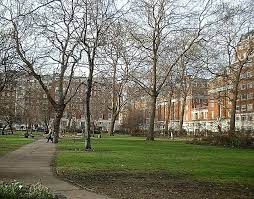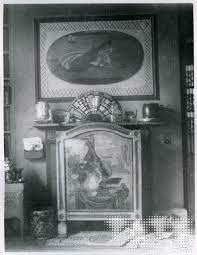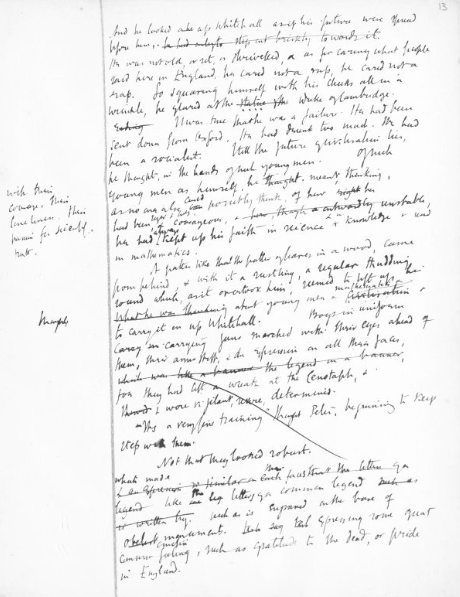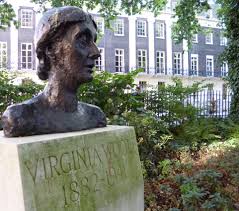Recently, I was thrilled to be asked by the Charleston Farmhouse to lead my walk through Bloomsbury for a group attending their Bloomsbury Revisited event in London. You can download a shorter version from the Voicemap.me website. But, if you’re not able to walk around London listening to me on headphones, I have posted the text of the walk here with photos, so you can follow along from anywhere. There are three parts, Tavistock Square, Gordon Square and Fitzroy Square. Here is Part 2:
- The corner of Gordon Square
Welcome back! But for those you just joining us, I’m Dr. Kathleen Dixon Donnelly, your guide for this walk.
My research was about writers and artists who ‘hung out’ together in salons in the early part of the last century, on either side of World War I. The four groups are Irish poet William Butler Yeats and his friends who founded the Abbey Theatre; Virginia Woolf and Bloomsbury, of course; Gertrude Stein and the American writers in Paris, and Dorothy Parker and the Algonquin Round Table.
Yeats ended his poem, The Municipal Gallery Revisited, with the lines:
‘Think where man’s glory most begins and ends,
and say my glory was I had such friends.’
so I have used ‘Such Friends’ as the title for all my work about ‘my’ writers and artists.
When the creative people known as The Bloomsbury Group lived in this area, they spent their days writing and painting, and their evenings in drawing rooms—or salons—where they ate, drank, argued, fell in and out of love, and talked. The group initially lived, worked, and socialised here in Gordon Square when they were just starting out, before Virginia became well-known.

Gordon Square
Although now it is quite a posh area of London, in the late 19th and early 20th centuries, Bloomsbury was considered to be really seedy, a cheap place for students and artists to live because the rents were low. Not anymore! According to the estate agents Foxtons, the average recent ‘sold’ price for a house around here is—any guesses?—£1.8m.
But in those days, middle class people didn’t own the homes they lived in—Virginia’s sister, painter Vanessa Bell, never even owned Charleston Farmhouse in Sussex which she is most associated with. The land and buildings were usually the property of the aristocracy, living somewhere else; the inhabitants just rented.
Let’s walk up to Number 46.
- Number 46 Gordon Square
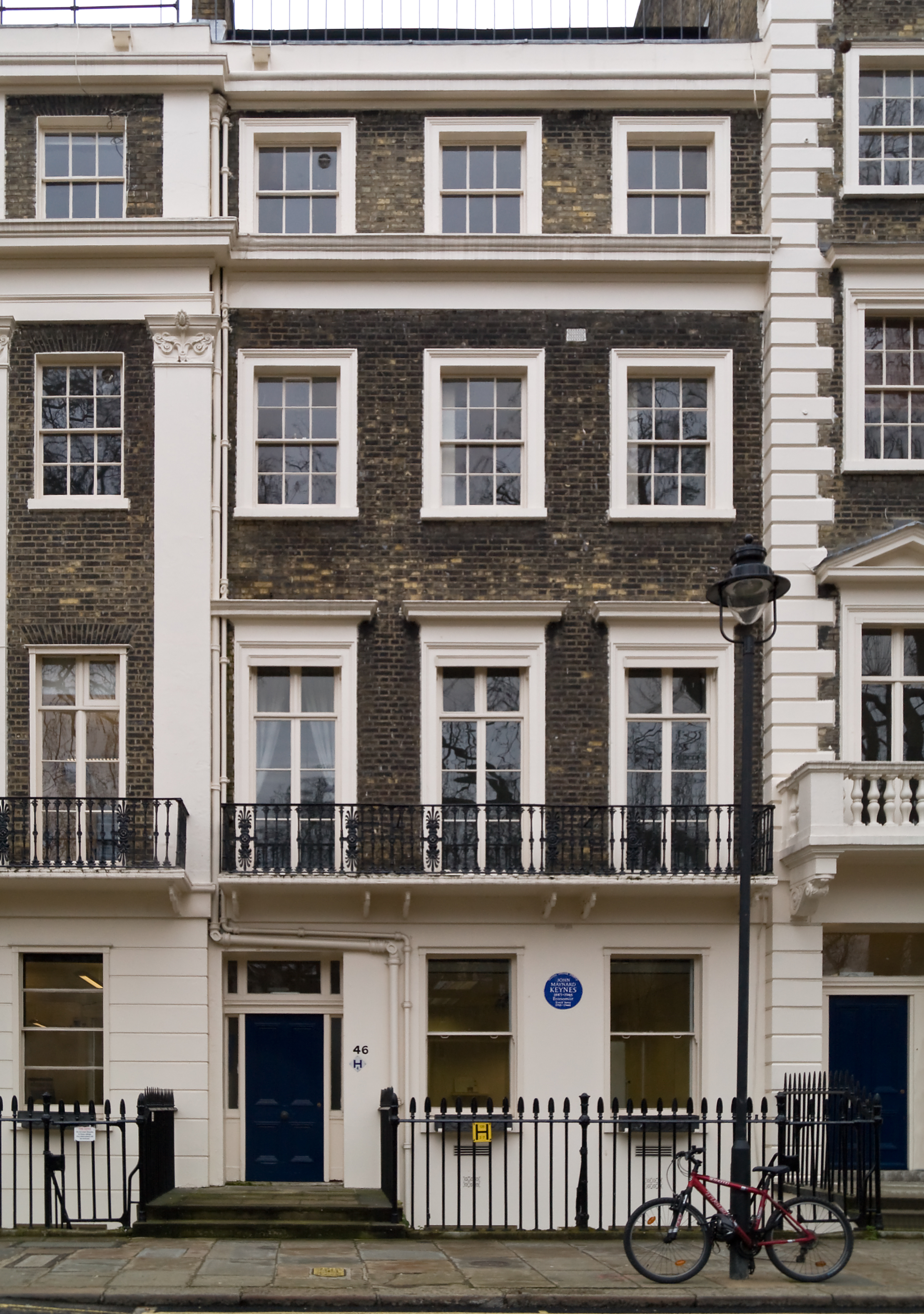
Number 46 Gordon Square
Standing here, you can see most of the buildings that the Bloomsbury group lived in during their years in Gordon Square. Straight ahead, Number 46, with the black door and plaque, is where Vanessa Stephen, then 25, moved with her brothers in October 1904, after their widowed father had died. Vanessa saw this as a release from the dark old house they had been brought up in, just off Hyde Park. Their sister Virginia, 22, didn’t join them until November, because Vanessa had wisely sent her to live with one of their aunts during the whole moving process.
You’ll notice that the plaque here is about just one of the Bloomsberries, economist John Maynard Keynes. There has been a lot of controversy with English Heritage because there are so few plaques with women’s names on them. I recommend that you nominate Vanessa for a plaque by clicking here.

Keynes’ blue plaque
In February of the next year, 1905, Thoby Stephen started having ‘at homes’ on Thursday evenings, when his friends from Cambridge University would know that he would be ‘at home’ for them. His sisters would sit quietly while university men like Lytton Strachey and Clive Bell, also in their 20s, would knowingly discuss ‘the nature of good.’
In the summer of 1906, living here, Virginia wrote her first short story, ‘Phyllis and Rosamond,’ about two young women coming to an evening in Gordon Square. It was not published in her lifetime.
And then, in November of that year, big, strong, athletic, strapping Thoby…died. Aged 26. The Stephen siblings had all been on a disastrous trip to Europe, and everyone had gotten sick. Thoby’s typhoid was misdiagnosed, and in a few days, he was gone. They were all devastated.
Two days after Thoby’s death, his friend Clive proposed—again—to Vanessa. And this time she said ‘yes.’ When they married, in spring 1907, Clive moved in to Number 46, and Virginia and her other brother, Adrian, moved over to Fitzroy Square, which we’ll visit in Part 3 of our walk.
For my research, I had to determine a specific time when each group started and ended. For Bloomsbury, I timed it from Vanessa and Clive’s marriage. The Bells continued to hold salons on Thursday evenings here, but now, after dinner, the party would often move to Virginia and Adrian’s living room, probably walking the same route that we will be walking today.
They were young, they were embarking on creative careers in writing and art, they were able to live on family money and small commissions, and they were enjoying their newfound freedom. Later, Virginia wrote that the whole world changed in one moment in Gordon Square in 1908. Here’s how she described the now infamous ‘semen scene’:
‘It was a spring evening. Vanessa and I were sitting in the drawing room…Suddenly the door opened and the long and sinister figure of Mr. Strachey stood on the threshold. He pointed his finger at a stain on Vanessa’s white dress. “Semen?” he said. Can 1 really say it? I thought, and we burst out laughing. With that one word all barriers of reticence and reserve went down. A flood of the sacred fluid seemed to overwhelm us. Sex permeated our conversation. The word bugger was never far from our lips. We discussed copulation with the same excitement and openness that we had discussed the nature of good. It is strange to think how reticent, how reserved we had been and for how long.’
After the first world war, the Bloomsbury group played musical chairs with the houses in Gordon Square. Vanessa was mostly out in Sussex with her kids, so their friend Maynard, took over the lease on Number 46. Back in the Victorian era, Keynes’ father had lived in Gordon Square as a university student.
Vanessa’s husband Clive hosted many of his mistresses here. The group gave lots of parties, such as a celebration when the Armistice was announced in 1918—over 100 years ago!—and a soiree for the visiting Russian ballet and Picasso the year after.
But by the time she was planning to move permanently out to Charleston, Vanessa wrote to Lytton,
‘We are so much overcome by the country as compared with London that I doubt if I shall ever return to Gordon Square…no telephone, no crowd to tea.’
Let’s walk down to the end of the block to see two more houses.
- Numbers 37 and 41 Gordon Square
In the second half of the 1920s, Vanessa lived in Number 37, with her lover, fellow painter, Duncan Grant, a few years younger than she, and gay.

Numbers 37 and 41 Gordon Square
In Number 41, many members of the Strachey family, including Lytton and his mother, made their home here, mostly in the 1920s.
Now we will head back to the street and stop at the corner for the last two Gordon Square addresses.
- Numbers 50 and 51 Gordon Square
When the Russian ballerina Lydia Lopokova and Maynard were carrying on their affair in the early 1920s, she hid out from her husband here. Keynes wrote to Vanessa:
‘If Lydia lived in Number 41, and Duncan and I lived in 46, you and family in 50, and we all had meals in 46, that might not be a bad arrangement…We all want both to have and not have husbands and wives.’
When Clive lived in Number 50 in 1926, Vanessa and Duncan decorated his rooms. A decade later, the farewell party for the Bell’s son Julian was held here, before he went off to fight—and die—in the Spanish Civil War.

50 and 51 Gordon Square
Let’s talk a bit about the people who lived in these houses.
In my research I found that in every group there were certain roles: There was always a ‘Star.’ Not a fiery leader, but the one they all knew was the most talented, like Virginia Woolf, Yeats, Stein and Parker.
Each ‘Star’ had a ‘Hostess,’ like Vanessa, who took care of everyone in the group. She was the Earth Mother, similar to Lady Augusta Gregory, Alice B. Toklas, and…Robert Benchley!
Maynard, as an economist, was the ‘Bridge’ to another field, which, according to my theory, is the role that kept the groups from becoming cults. The Irish group had the politician Douglas Hyde; the Paris group, the painter/photographer Man Ray; and the Algonquin Round Table, the union organizer Heywood Broun.
The Bridge is important because he brings a different point of view. A bunch of writers sitting around talking about writing isn’t very creative. I think it is the presence of someone who looks at the world from another angle that makes these salons so creative. That’s my theory, and I’m sticking to it.
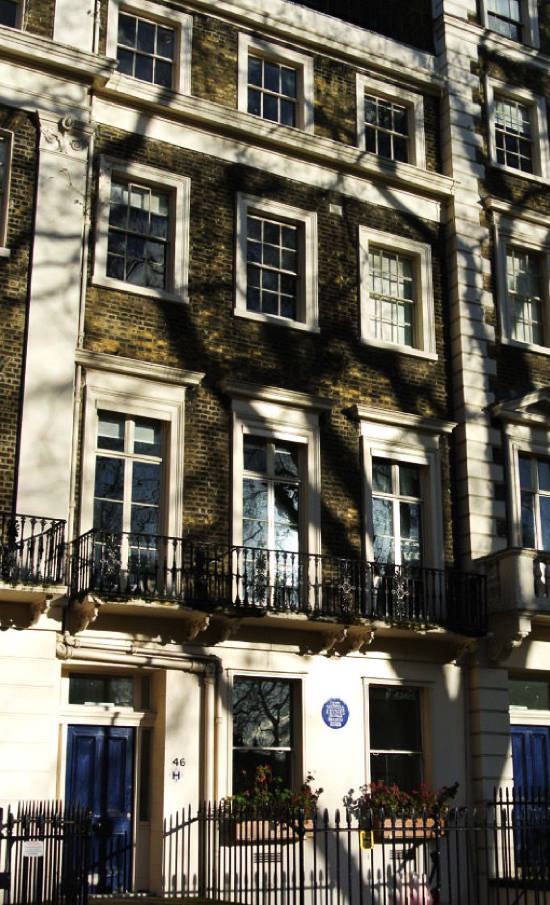
51 Gordon Square
Lytton lived here in Number 51 on the ground floor around 1928. Every group had an ‘Irritant’—annoying Irishman George Moore, pugnacious Ernest Hemingway, and flaming peacock Alexander Woollcott. But there was no one more irritating than Lytton. He was a true British eccentric, with his high-pitched voice and long red beard. He drove them all nuts—but they loved having him around. Don’t we all have people like that in our groups of friends?! He had affairs with his cousin, Duncan, and Duncan’s lover, Maynard, and even proposed to Virginia once. But thought better of it the next day.
You can see why the Bloomsbury group has been described as those who
‘loved in triangles and lived in squares.’
If you want to see an excellent depiction of Lytton, I recommend Jonathan Pryce in the film Carrington, about his long-term relationship with the painter Dora Carrington, played by Emma Thompson. That’s your video tip for the week.
Gordon Square continued to be a hub for creative people, even after the 1920s. Charles Laughton and his wife Elsa Lancaster lived here in the thirties and gave parties with the Bloomsberries. Maynard would hold meetings here and in 1940 land mines were found buried here.
We’ll stop for a minute at the entrance to Gordon Square before heading over to Fitzroy Square for Part 3.
- Entrance to Gordon Square
Here is where the National Literary Trust placed the Mrs. Dalloway bench a few years ago. Along with 50 other literary benches around the city, it was auctioned off in 2015.

The Mrs. Dalloway Bench, entrance to Gordon Square
Let’s take a minute to talk about Duncan. To balance off the Irritant, every group also had an ‘Angel,’ someone who everybody just loved. In the case of Bloomsbury, it was Duncan. They all loved him. Most of them even slept with him. As one of the Fitzroy Square housemaids said,
‘That Mr. Grant gets in everywhere.’
He was a bit younger than the others, and had a certain innocence about him. Duncan also lived, at Charleston, until he was 93.
Having read numerous biographies of all of my writers, I have a piece of advice for those of you who are lucky enough to be in a group of creative people: Outlive them. Because biographers have to suck up to the last living members, they get good write ups—artist/poet AE [George Russell] for the Irish and playwright Marc Connelly for the New Yorkers. Unfortunately, the Paris ‘Angel,’ novelist F. Scott Fitzgerald, didn’t live long enough. He died at age 44 in 1940, the exception that proves the rule.

Gordon Square Gardens
Go straight ahead through Byng Place, and cross over Gower Street at the pedestrian crossing. Careful! Turn right and walk up to Grafton Way. I’ll tell you about Clive’s role in the group when we get there.
- Foundling Hospital, Grafton Way
This large hospital ties in nicely with a Bloomsbury story.
Virginia and Vanessa’s relatives were quite scandalized when they found out the young Stephens were moving to this part of town, to live on their own! And have their university friends visit! And stay overnight! Vanessa was so glad to be rid of her other relatives, she told one shocked aunt,
‘It will be all right. And the Foundling Hospital is nearby, in any case.’
This is actually the University College Hospital; the Foundling Hospital was on the other side of Bloomsbury. But the story works well here, don’t you think?

University College Hospital, Gower Street and Grafton Way
Back to Clive. Whereas the others would be considered middle class, Clive came from a wealthy family. He became an influential art critic, with his most famous book called Art. A bit pretentious I’ve always thought.
Clive was the ‘Observer’ in this group. All the ‘Observers’ were definitely part of the group, but a bit to one side, watching what was going on. They usually were active in lots of other social circles as well, and this was true of Clive—also playwright John Millington Synge in the Irish group, composer and music critic Virgil Thomson in Paris, and playwright George S Kaufman in New York.
When Vanessa married Clive and started a family, the still single Virginia was a bit jealous. She even started a flirtation with Clive at one point. Virginia described her sister and brother-in-law in a letter to a friend:
‘[They] live…much like your ladies in a French salon; they have all the wits and poets; and ‘Nessa sits among them, like a Goddess.’
After the birth of their two sons, Clive and Vanessa had an ‘open’ marriage and he had many affairs, while still keeping a room of his own at Charleston.
Now we will walk down Grafton Way and cross Tottenham Court Road. Be careful!
You can pick up the walk in the next blog, ‘Such Friends’ Bloomsbury Walk, Part 3: Fitzroy Square. If you missed the beginning, just search for ‘Such Friends’ Bloomsbury Walk, Part 1: Tavistock Square.
To read about American writers, Manager as Muse explores Scribner’s editor Maxwell Perkins’ work with F. Scott Fitzgerald, Ernest Hemingway and Thomas Wolfe and is available on Amazon in both print and Kindle versions.
